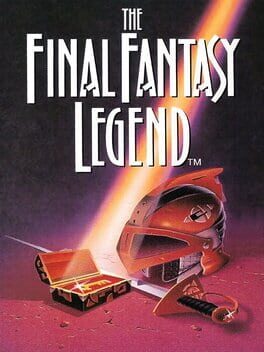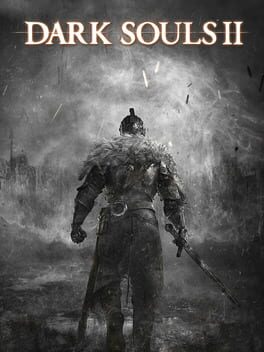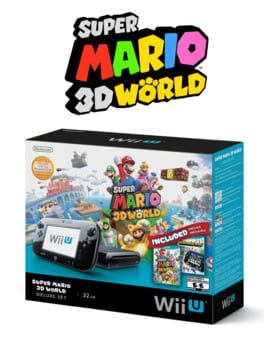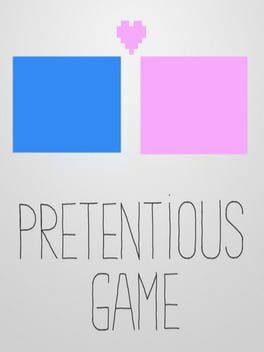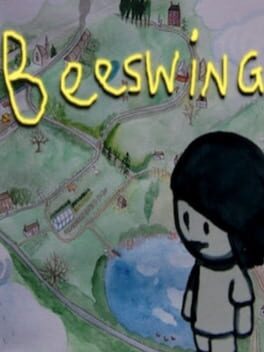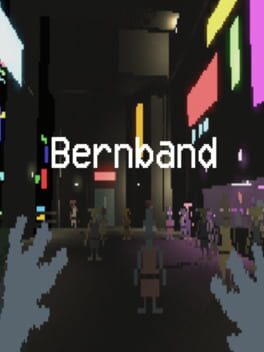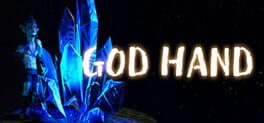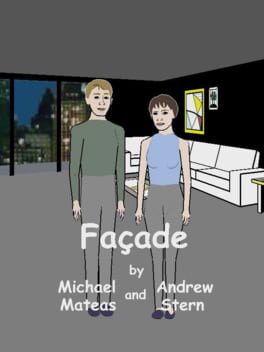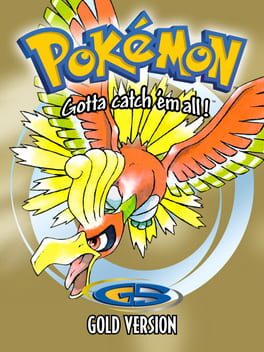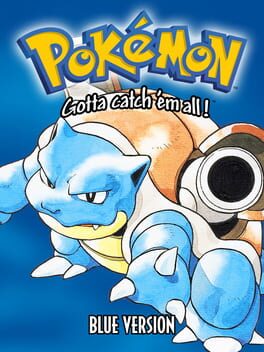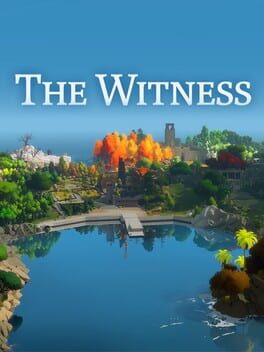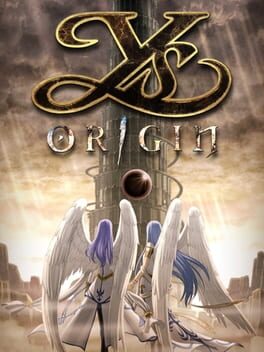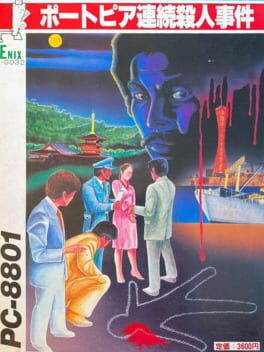MelosHanTani
BACKER
some detailed thoughts on like the first half of the game here, especially the dungeons:
https://x.com/han_tani2/status/1802275470991605804
First, I was really surprised how much this game feels like a first draft of what led to Ocarina of Time and Link's Awakening.
Today, this game strongly has a feeling of being undercooked but then polished as-is in order to make a release date. In particular there's kind of a weird mismatch of all the things you can do and items you have, and the levels and world themselves. For instance, in this interview, Miyamoto talks about designing the physicality of pushing and pulling switches. https://glitterberri.com/development-interview/
It's a nice notion and the kind of thinking I like, and it's true that for 1991 this kind of design innovation and sense of physicality in an action-adventure is commendable. And actually I would say that the picking up and throwing is one of the most brilliant mechanical things from LTTP: it gives the world a really embodied foundation and sense of discovery - arguably serving as a foundation for the mechanical aspects of what made Ocarina of Time really memorable.
Game sequels are tough to make. Because you're designing as a sequel, you can easily fall into trying to correct or include things from the original. If you stick too closely to this way of designing, ultimately you'll get a work that feels like it's pulled in too many directions. Zelda is a series that is symbolic of this: one good idea is counterbalanced by the need to include some old idea.
That is, I think LTTP's weakness is that it was being created as a follow-up or correction to LoZ: while you have Miyamoto's innovation of the pick-up-and-throw, you also have like... this expectation of a giant overworld and these puzzle dungeons. Link has to have a sword, so combat gets designed around that, rather than exploring the implications of picking/throwing.
In addition, the game doesn't even just explore the sword: because it has the expectation of dungeons + items, there's so many things that go underused - and that don't have their designs polished enough so we get a gigantic list of weird inconsistencies that - I imagine - probably would make Miyamoto scream. I would scream if I had to ship a game with these sort of weird design mis-affordances. Here are but a few.
- The ice rod can't stop those rotating fireballs
- the boomerang and hookshot bounce off of nonsensical enemies
- the sword hitbox doesn't match the sword very well , especially the lv. 1 sword
- you only slash the grass tuft that's exactly in front of you...
- you can't set mummies on fire with a lantern
- You can't pick up the chargeable-only rock piles, even with level 2 mitts, despite them being composed of level-1-pickupable-rocks
- the cape makes you invincible to bouncers
- knockback (and directional bumping away) of enemies is very confusing to get a hold of
- the medallions don't hurt many bosses
- the hammer doesn't damage things you'd expect (the ice boss's ice)
- Bombs often don't damage things that.. should be damaged
Overall, the dungeons have this mushy indistinct feeling where you just try a bunch of stuff until it works, or a puzzle is so obviously asking you do to a simple thing with a single item. Likewise combat feels more like trying to annihilate everything with the correct item before you're slammed by fast-moving spiky objects and chugging potions.
It's funny because Zelda often comes SO close to just embracing limitations - the object picking/throwing, OoT's limited jump... but then it often throws that out of the window in favor of like 'big epic inventory'. Truly, you don't need much to make an adventure game work, you just need creativity and confidence to make a smaller set of things work, rather than going big, wide, shallow. Regardless of how I feel about say, BotW as a whole, the puzzles in that game were fun because you only had a few items!
It's still an impressive game for 1991, though with the quiet narrative direction they went, they really could have punched up the sense of place of many or most dungeons. Instead the whole game just has this subtle sense of... there being something missing.
Anyways, throwing signs and bushes and pulling on mario paintings to get money is brilliant... make a game all about that!
It's Good. It takes the typical turn-based RPG language developed through the 80s and instead uses it as this vehicle to simple create juust enough dungeon-exploring friction to tell a surprisingly expansive story - a story of a party of 4 surprisingly brave people who are climbing a tower that connects multiple worlds. Multiple worlds of other peoples who don't really care about whatever truths this tower contains - they just want to live normal lives.
The heroes reach the pinnacle of 'truth' of their existence, and when faced with a doorway of what 'true existence' might be, they go 'Fuck this heavenly outer space bullshit,' and walk right back down to their town to live out their lives. Roll credits where we step through all these strange moments we just experienced - moments that were told in the fastest cutscenes imaginable, while aware that the audience likely is aware of these situations and tropes from other media and lets us fill in the blanks.
I really like how creative many screens are, and how they take advantage of the gameboy tiles so well, and convey so many space and ideas. The whole < 10 hour JRPG form seems really interesting, the way that time constraint leads to denser levels, denser everything all around.
The heroes reach the pinnacle of 'truth' of their existence, and when faced with a doorway of what 'true existence' might be, they go 'Fuck this heavenly outer space bullshit,' and walk right back down to their town to live out their lives. Roll credits where we step through all these strange moments we just experienced - moments that were told in the fastest cutscenes imaginable, while aware that the audience likely is aware of these situations and tropes from other media and lets us fill in the blanks.
I really like how creative many screens are, and how they take advantage of the gameboy tiles so well, and convey so many space and ideas. The whole < 10 hour JRPG form seems really interesting, the way that time constraint leads to denser levels, denser everything all around.
2014
thinking abt this from the 2014 goty event.. while i appreciate recent fromsoft to various extents, I think this is their last work to really capture my imagination, for all sorts of reasons. (Not to say that their post-DS2 games don't have great moments of their own, but that's a matter for another time). I think the main reason is DS2 feels like the the turning point for their focus more towards a very specific sort of action which interests me less overall.
Dark Souls 2 is honestly a little fucked up! But that's what makes it good. There's more levels than there should be, stuff is stitched together nonsensically..
The game keeps going on for like 10-20 hours more than you'd expect with the dragon islands world, the shrine of amana, etc... each area feels like this dense zone that the creators wanted to share, even if it didn't perfectly fit. It kind of has this texture of madness to it and theming that feel so video gamey but manage to work as a coherent and memorizable world. idk. It honestly has that energy of those sprawling wild adventure platformers (think ecco, kid chameleon, dragon slayer 4..), that feeling of 'why NOT add a sick dark green poison cave with gigantic impossible to see giants'). But it's all kept so densely knit, just wild little idea after idea.
The thing is though, when I do pick it up it feels really hard to get into. I have a lot less patience for the whole 'die and run back and slowly try again' thing since i've already done that a lot in the past. i should just make a cheese build or play with save states or something
Dark Souls 2 is honestly a little fucked up! But that's what makes it good. There's more levels than there should be, stuff is stitched together nonsensically..
The game keeps going on for like 10-20 hours more than you'd expect with the dragon islands world, the shrine of amana, etc... each area feels like this dense zone that the creators wanted to share, even if it didn't perfectly fit. It kind of has this texture of madness to it and theming that feel so video gamey but manage to work as a coherent and memorizable world. idk. It honestly has that energy of those sprawling wild adventure platformers (think ecco, kid chameleon, dragon slayer 4..), that feeling of 'why NOT add a sick dark green poison cave with gigantic impossible to see giants'). But it's all kept so densely knit, just wild little idea after idea.
The thing is though, when I do pick it up it feels really hard to get into. I have a lot less patience for the whole 'die and run back and slowly try again' thing since i've already done that a lot in the past. i should just make a cheese build or play with save states or something
Great Bundle. Holding the Huge Box and walking back from Wal-Mart, slowly peeling away the tape on the box... opening each piece... turning on my Wii U. Then eventually the whole thing collecting dust when the Switch game out. This box was kind of big, which is why I can't give it 5 stars. But who doesn't like Mario and Nintendo Land Bundled together? Isn't there something so great and tactilely satisfying about unboxing and plugging in some new device? Those were the days. Now everything is FILES on my HARD DRIVE!
I'm lying, I never bought this bundle. But in 2014 Marina and I did both buy New Fancy Refurbished Wii U's. Fresh out of college... feeling like hot shots after releasing Anodyne 1... a year into the (3.5 year!) development of Even the Ocean, a monolithic game that is both remarkable and plodding.
Analgesic Productions's baby mode...
Anyways, the Wii U led to a few fun years of checking out most of the major releases via GameFly's rental service... eagerly checking my mailbox every day for something to come in the mail. Walking out into the freezing Chicago winter to go drop the finished games in the return box. The disappointment when a game was bad and I'd return it immediately. The gigantic, huge honking controller and bizarre screen and controls. My stupid development set-up with a laptop stuck on top of an ikea table.
Getting RSI from Bayonetta, playing all those Mario's, etc... anticipating Captain Toad's release. Coming home, cooking a Blue Apron recipe, popping in some Wii U game before hacking away at a bit of Even the Ocean development.
Kind of a fun time to think about. Consoles still felt like they had at least a little reason to exist due to the uniqueness of their hardware. Ah... 2014. Actually, a lot of terrible things happened in the world in 2014. But... I guess there were fun times....
I'm lying, I never bought this bundle. But in 2014 Marina and I did both buy New Fancy Refurbished Wii U's. Fresh out of college... feeling like hot shots after releasing Anodyne 1... a year into the (3.5 year!) development of Even the Ocean, a monolithic game that is both remarkable and plodding.
Analgesic Productions's baby mode...
Anyways, the Wii U led to a few fun years of checking out most of the major releases via GameFly's rental service... eagerly checking my mailbox every day for something to come in the mail. Walking out into the freezing Chicago winter to go drop the finished games in the return box. The disappointment when a game was bad and I'd return it immediately. The gigantic, huge honking controller and bizarre screen and controls. My stupid development set-up with a laptop stuck on top of an ikea table.
Getting RSI from Bayonetta, playing all those Mario's, etc... anticipating Captain Toad's release. Coming home, cooking a Blue Apron recipe, popping in some Wii U game before hacking away at a bit of Even the Ocean development.
Kind of a fun time to think about. Consoles still felt like they had at least a little reason to exist due to the uniqueness of their hardware. Ah... 2014. Actually, a lot of terrible things happened in the world in 2014. But... I guess there were fun times....
2014
2014
another throwback unearthed... man january 2014...I remember I visited Nina at her apartment in NYC alongside Marina then - when we went there to show a VERY early version of Even the Ocean at the indiecade festival, as well as to watch a speedrun of Anodyne 1!
nina freeman did a lot of 'narrative vignette' games that focus on very specific and short sorts of moments, in this case, a girl experimenting with dolls and undressing them. My relation to this game (other than knowing Nina) is that Marina also did the art for this game. I did music and sfx for some of Nina's other games, in particular I did some sound effects for her longer game Cibele!
This game in particular took off a lot in 2014, i remember it got a good amount of coverage. What a time for games journalism! I think since then we've seen similar games be released on Itch.io, I always think of this period as kinda the beginning of that sort of solo dev/small team game-jam 'self-narrative-exploration' kinda game.
nina freeman did a lot of 'narrative vignette' games that focus on very specific and short sorts of moments, in this case, a girl experimenting with dolls and undressing them. My relation to this game (other than knowing Nina) is that Marina also did the art for this game. I did music and sfx for some of Nina's other games, in particular I did some sound effects for her longer game Cibele!
This game in particular took off a lot in 2014, i remember it got a good amount of coverage. What a time for games journalism! I think since then we've seen similar games be released on Itch.io, I always think of this period as kinda the beginning of that sort of solo dev/small team game-jam 'self-narrative-exploration' kinda game.
2014
(remembered this as part of my 2014 goty list) do you know jack king-spooner's games? He is a prolific gamedev/artist/composer and this is one of his earlier works I quite enjoyed back in the day - I think inspired by his hometown, you walk around and experience various narrative vignettes. lovingly crafted and written like his other works - a great game from 2014 to check out.
2014
found this while looking for games for my 2014 throwback GOTY list. loved this game back in the day! taught it a many times as a Game Design Teacher... It's one of my formative '3d game dev' games - a very simple 3d game coding-wise but full of the kind of spatial possibilities you can get by being creative with it. loved how everything is just walking aroud, doorways, looking...etc. loved the parking lot area, the art gallery, the walkways across alien night skylines... evocative and fun space.
it's a fun alien world to wander, where nothing is said and it's mostly a story you make up based on the places you walk to and see, the little vignettes you run into. nice short15-30 minute game.
it's a fun alien world to wander, where nothing is said and it's mostly a story you make up based on the places you walk to and see, the little vignettes you run into. nice short15-30 minute game.
2019
2005
lol very good. genuinely disturbing to be just caught in the middle of these two's issues and revelations...funny to just walk off and ignore them... say random stuff.. side with one person over another. Hard to tell exactly how I'm derailing/moving the conversation - but that's also part of the charm. Would be nice if being kicked out wasn't so sudden and if you could reset the game faster.
1999
Played up through the 7th badge (these games go by quick with 10x speedup!) I was actually surprised at my bad reaction to G/S: in my childhood mind, these were the best two games. Likewise, I was surprised how good R/B felt.
To my surprise, G/S feel a bit flat. The locations and landmarks feel more touristy than anything: rather than the way that R/B's world was a little denser and intertwined and felt like it was drawing on some kind of Japanese childhood/adulthood, G/S's map feels a bit more arbitrary with various 'tourist destinations' dropped in here and there, weirdly intertwined with Team Rocket and Rival stuff, scouring the maps for missed HMs. I appreciate the effort to tie real world history to the game, but it feels a bit dropped in - the mythology of pokemon themselves don't feel that tied to the systems - being a kid and getting badges, fighting pokemon.
The Radio, night/day, new balls, phone calls, etc - these are all new and sort of cute but they also don't feel super relevant to the main game based on what they amount to.
Overall there are still some nice moments: I liked the underground walkway with trainer fights this time! The way the northern/northwestern reaches of the map seem more steeped in forests and caves is an interesting contrast. Seeing regions guarded for cultural reasons (Dragon's Den guarded if you don't tame dragons, Tin Tower if you're missing a badge) - these border on interesting, but they still feel detached from the main character - a little kid who for some reason ends up catching Gods and taking down terrorists.
You can really see the pokemon formula start to take shape here: new pokemon, a new villain group, another kid who for some reason ascends to divinity-level strength against a world which contradictory..ly tries to stay grounded. A world obviously inspired by some real place, but that canonically refuses to be linked to that real place.
I have no doubt that some of the later games manage to balance the battles, complexity, and story better - but none of those things are really what made Red/Blue so interesting to begin with.
To my surprise, G/S feel a bit flat. The locations and landmarks feel more touristy than anything: rather than the way that R/B's world was a little denser and intertwined and felt like it was drawing on some kind of Japanese childhood/adulthood, G/S's map feels a bit more arbitrary with various 'tourist destinations' dropped in here and there, weirdly intertwined with Team Rocket and Rival stuff, scouring the maps for missed HMs. I appreciate the effort to tie real world history to the game, but it feels a bit dropped in - the mythology of pokemon themselves don't feel that tied to the systems - being a kid and getting badges, fighting pokemon.
The Radio, night/day, new balls, phone calls, etc - these are all new and sort of cute but they also don't feel super relevant to the main game based on what they amount to.
Overall there are still some nice moments: I liked the underground walkway with trainer fights this time! The way the northern/northwestern reaches of the map seem more steeped in forests and caves is an interesting contrast. Seeing regions guarded for cultural reasons (Dragon's Den guarded if you don't tame dragons, Tin Tower if you're missing a badge) - these border on interesting, but they still feel detached from the main character - a little kid who for some reason ends up catching Gods and taking down terrorists.
You can really see the pokemon formula start to take shape here: new pokemon, a new villain group, another kid who for some reason ascends to divinity-level strength against a world which contradictory..ly tries to stay grounded. A world obviously inspired by some real place, but that canonically refuses to be linked to that real place.
I have no doubt that some of the later games manage to balance the battles, complexity, and story better - but none of those things are really what made Red/Blue so interesting to begin with.
1996
This game is such an interesting abstraction of the Japanese cityscape and countryside: I would say it feels most not like a central-Tokyo but like it was designed by someone who lived in one of the major cities an hour or two from central Tokyo. You get the occasional dense area with a skyscraper or two (Saffron City), dense collections of single family homes (Celadon City), but there's still the countryside running through mountains and forests, farming towns here and there.
That is easily Pokemon Blue's most interesting trait: it's a world based on reality, but not in the direction of an Earthbound that's more focused on constantly parodying America or people. Pokemon Blue is a game more interested in the idea of adding a layer of mystery (world of pokemon) and exaggeration (everyone catches pokemon!) to the mundane normal everyday life. I imagine this (and the affordances of the Game Boy and the 151 pokemon, and the marketing efforts of Nintendo) is what helped to capture the minds of the initial millions of players! I'm not sure how much of that exists today, where the series feels a bit more phoned in and calculated.
It's honestly quite disturbing the extent that Satoshi Tajiri's artistic idea become full-on media-mix/anime-ified - most symbolic of this is how sprites underwent slight revisions between the original JP red/green to US red/blue to yellow to bring things 'more in line with the anime' - a direction which, I think, informs the series direction today: something that's more interested in doing only what's necessary to keep the brand going, rather than an interest in the kind of design fundamentals Tajiri/team had that allowed them to conceive of Pokemon Blue in the first place.
The story in Blue is most interestingly not at all much of an anime story. Nobody is really fleshed out except potentially Giovanni, the game feels like a series of vignettes where the sport-like Pokemon battling at times briefly overlaps with the reality of our world. Lt. Surge fought with pokemon in a war, Mew is from South America, the moon landing happened in 1969, people are addicted to gambling, there's a crime syndicate, pokemon can die and become ghosts. There's a lot of room for your imagination to think about.
I loved the underground walkways that feel like the long, underground train station walkways in Japan, or even arguably underground shoutengai (https://en.wikipedia.org/wiki/Sh%C5%8Dtengai). How the Celadon "Mansion" is a mistranslation of the Japanese Manshon (often a 5-10 story apartment or mixed use building), how it has the Game Freak devs. The department store inspired by big Japan department stores.
I think the first 2/3 of this game (through Silph Tower) is really well paced, I love how you go between countryside exploration and weird little dungeons in urban settings or caves. The last 1/3 of the game feels a bit more out of place - the 'science' angle, while interesting, kind of starts and ends with Cinnabar island. Seafoam Island and Victory Road are fine, but they feel less connected to the whole game's sense of place compared to e.g. the rocket base or mt. moon. I don't think this detracts from the strength of the game, but the game did feel like it was dragging by that point - the fact it began doing block puzzles might be symbolic of that. (Ha ha)
An aside: The core of the "trainers are multiple pokemon, random encounters are one pokemon" is a brilliant design choice - they can express trainer personality through this, they can characterize spaces like dungeons or caves based on who is there. I actually wanted to see more of the Viridian Forest-type dungeon - where not everything is a random encounter tile.
--
After playing, it does feel like the game is at a bit of a crossroads. I think Tajiri definitely had more he wanted to do with his vision, but they may not have been in-line with the more obvious routes to 'improving' the game.
The more obvious routes, to me, neither of which interest me personally, are:
- Increasing the traditional storytelling: clear villain characters, more cutscenes, more regularly paced villain-related levels. This could help attract an audience put off by the way Pokemon Blue feels like falling into a story at times (which I personally prefer, haha). It would also increase franchise tie-in and business synergies!
- Making the battle system 'better' and not a pushover. Make the game more technical, increase training options, create harder battles or challenges - as this would be the only way to 'balance' the game from becoming too easy. This lays a lot of weird traps though, and I think pokemon's devs fell into most of them: stark divides between the 'true combat postgame', many compulsive traps around perfecting stats/builds (rather than letting you teambuild freely), etc.
Personally I would have liked it if the game went harder on the weird influences and level layouts, maybe experimenting with a smaller level range or different methods of training other than bland 'QoL' features to help even leveling... but hey! I'm not the billionaire company here...
That is easily Pokemon Blue's most interesting trait: it's a world based on reality, but not in the direction of an Earthbound that's more focused on constantly parodying America or people. Pokemon Blue is a game more interested in the idea of adding a layer of mystery (world of pokemon) and exaggeration (everyone catches pokemon!) to the mundane normal everyday life. I imagine this (and the affordances of the Game Boy and the 151 pokemon, and the marketing efforts of Nintendo) is what helped to capture the minds of the initial millions of players! I'm not sure how much of that exists today, where the series feels a bit more phoned in and calculated.
It's honestly quite disturbing the extent that Satoshi Tajiri's artistic idea become full-on media-mix/anime-ified - most symbolic of this is how sprites underwent slight revisions between the original JP red/green to US red/blue to yellow to bring things 'more in line with the anime' - a direction which, I think, informs the series direction today: something that's more interested in doing only what's necessary to keep the brand going, rather than an interest in the kind of design fundamentals Tajiri/team had that allowed them to conceive of Pokemon Blue in the first place.
The story in Blue is most interestingly not at all much of an anime story. Nobody is really fleshed out except potentially Giovanni, the game feels like a series of vignettes where the sport-like Pokemon battling at times briefly overlaps with the reality of our world. Lt. Surge fought with pokemon in a war, Mew is from South America, the moon landing happened in 1969, people are addicted to gambling, there's a crime syndicate, pokemon can die and become ghosts. There's a lot of room for your imagination to think about.
I loved the underground walkways that feel like the long, underground train station walkways in Japan, or even arguably underground shoutengai (https://en.wikipedia.org/wiki/Sh%C5%8Dtengai). How the Celadon "Mansion" is a mistranslation of the Japanese Manshon (often a 5-10 story apartment or mixed use building), how it has the Game Freak devs. The department store inspired by big Japan department stores.
I think the first 2/3 of this game (through Silph Tower) is really well paced, I love how you go between countryside exploration and weird little dungeons in urban settings or caves. The last 1/3 of the game feels a bit more out of place - the 'science' angle, while interesting, kind of starts and ends with Cinnabar island. Seafoam Island and Victory Road are fine, but they feel less connected to the whole game's sense of place compared to e.g. the rocket base or mt. moon. I don't think this detracts from the strength of the game, but the game did feel like it was dragging by that point - the fact it began doing block puzzles might be symbolic of that. (Ha ha)
An aside: The core of the "trainers are multiple pokemon, random encounters are one pokemon" is a brilliant design choice - they can express trainer personality through this, they can characterize spaces like dungeons or caves based on who is there. I actually wanted to see more of the Viridian Forest-type dungeon - where not everything is a random encounter tile.
--
After playing, it does feel like the game is at a bit of a crossroads. I think Tajiri definitely had more he wanted to do with his vision, but they may not have been in-line with the more obvious routes to 'improving' the game.
The more obvious routes, to me, neither of which interest me personally, are:
- Increasing the traditional storytelling: clear villain characters, more cutscenes, more regularly paced villain-related levels. This could help attract an audience put off by the way Pokemon Blue feels like falling into a story at times (which I personally prefer, haha). It would also increase franchise tie-in and business synergies!
- Making the battle system 'better' and not a pushover. Make the game more technical, increase training options, create harder battles or challenges - as this would be the only way to 'balance' the game from becoming too easy. This lays a lot of weird traps though, and I think pokemon's devs fell into most of them: stark divides between the 'true combat postgame', many compulsive traps around perfecting stats/builds (rather than letting you teambuild freely), etc.
Personally I would have liked it if the game went harder on the weird influences and level layouts, maybe experimenting with a smaller level range or different methods of training other than bland 'QoL' features to help even leveling... but hey! I'm not the billionaire company here...
2016
Seeing Liz review this here made me remember I once played this! I wrote a really long essay on it that I don't really agree with (please don't dig it up.. or do...)
Perhaps the epitome of the 'teach the player without using words' late 00s/10s philosophy of game design - a not-bad rule of thumb that could (generously) be interpreted as 'maintain some level of clarity/consistency/ design in a way that people can figure out more complex things themselves' that was ultimately twisted into pure idiocy about NEVER USING WORDS that forgets that COMPLETELY NOT USING WORDS ONLY WORKS IF THE GAMEPLAY REALLY FITS OR YOU CAN ASSUME A PLAYER HAS LEGACY KNOWLEDGE FROM PAST GAMES. Sure it's not a bad idea to try and convey puzzle mechanics to players through the experience of using them, but then 10 years of video essays later and everyone thinks it means to make an overwrought first level that 'teaches you how to double jump without using words'. NO!!! THE PRINCIPLE MAKES SENSE IF IT'S SOME PUZZLE GAME LIKE THE WITNESS WHERE THE PUZZLE RULES MAKE INTUITIVE SENSE BUT WOULD BE CLUNKY TO STATE OUTRIGHT!!!!
But... The Witness!! Why do I like it? Why, it has a deep philosophy about the humanity of mankind... NOT!!! I like this game because the puzzles are fun to solve, they interact with the environment, and they sort of acknowledge that a fun part of puzzle solving is failing, walking away and coming back. It incorporates walking way and coming back into the environment and layout! The island is pretty and fun to walk around! The Witness level design "Bangs". I like the tactile feeling and sound design of looking at the panels and drawing the solutions. I could draw those puzzle lines for days.
Look. If I'm being honest I don't really like pure puzzle games that much. I make my little progress across the level select, inevitably get stuck and then forget about the game. My life is a Brain Teaser, I don't want to just Solve Brain Teasers. I don't want to solve middling puzzles in service of revealing some arbitrary conspiracy mystery: I just want to do some fun good puzzles and see some stuff, and this game has that. Playing this was a "Good Time".
Anyways it's time for "Analgesic Lore": did you know a super early version of Even the Ocean - honorary recipient of a 3.6 average Backloggd score rating - was supposed to be a 2D game about exploring islands with PUZZLES...? Well it was, and it never got anywhere because I just don't like puzzles that much, maybe. Then again I made Sephonie's Linking Puzzle system (ironically that game was on an island), which weren't really 'puzzles', but...
More exploration puzzlers set in 3D. Please! Do it for me!
Perhaps the epitome of the 'teach the player without using words' late 00s/10s philosophy of game design - a not-bad rule of thumb that could (generously) be interpreted as 'maintain some level of clarity/consistency/ design in a way that people can figure out more complex things themselves' that was ultimately twisted into pure idiocy about NEVER USING WORDS that forgets that COMPLETELY NOT USING WORDS ONLY WORKS IF THE GAMEPLAY REALLY FITS OR YOU CAN ASSUME A PLAYER HAS LEGACY KNOWLEDGE FROM PAST GAMES. Sure it's not a bad idea to try and convey puzzle mechanics to players through the experience of using them, but then 10 years of video essays later and everyone thinks it means to make an overwrought first level that 'teaches you how to double jump without using words'. NO!!! THE PRINCIPLE MAKES SENSE IF IT'S SOME PUZZLE GAME LIKE THE WITNESS WHERE THE PUZZLE RULES MAKE INTUITIVE SENSE BUT WOULD BE CLUNKY TO STATE OUTRIGHT!!!!
But... The Witness!! Why do I like it? Why, it has a deep philosophy about the humanity of mankind... NOT!!! I like this game because the puzzles are fun to solve, they interact with the environment, and they sort of acknowledge that a fun part of puzzle solving is failing, walking away and coming back. It incorporates walking way and coming back into the environment and layout! The island is pretty and fun to walk around! The Witness level design "Bangs". I like the tactile feeling and sound design of looking at the panels and drawing the solutions. I could draw those puzzle lines for days.
Look. If I'm being honest I don't really like pure puzzle games that much. I make my little progress across the level select, inevitably get stuck and then forget about the game. My life is a Brain Teaser, I don't want to just Solve Brain Teasers. I don't want to solve middling puzzles in service of revealing some arbitrary conspiracy mystery: I just want to do some fun good puzzles and see some stuff, and this game has that. Playing this was a "Good Time".
Anyways it's time for "Analgesic Lore": did you know a super early version of Even the Ocean - honorary recipient of a 3.6 average Backloggd score rating - was supposed to be a 2D game about exploring islands with PUZZLES...? Well it was, and it never got anywhere because I just don't like puzzles that much, maybe. Then again I made Sephonie's Linking Puzzle system (ironically that game was on an island), which weren't really 'puzzles', but...
More exploration puzzlers set in 3D. Please! Do it for me!
2006
Almost done with my Hard Toal run! First, the things I think are good
- The romance and setting. Oh babey
- At certain brief points the combat feels really good
BUT...
For the past few years I've espoused these three Ys games (with the order being Oath > 6 > Origin) but coming back to Origin I see a number of problems.
First, the gameplay's whole point of existing is speed and aggression. It feels absolutely the best when you're doing these things and being rewarded for it. For this reason, Hugo's Hard playthrough kind of sucks: he's slow, aiming is fiddly and you're doing so much thinking about your exact positioning as a result.
BOSSES
The boss movesets are often contradictory with the whole 'pulpy dark high fantasy power metal' aesthetic and "fast and aggression feel good!" idea : a gigantic number (perhaps all?) of the bosses are designed around only having particular safe windows to attack. These range from the most obnoxious (Gelaldy, the fire construct, who you must wait for his hands to pound the ground): these feel almost like Zelda/Mario bosses: you're expected to behave a very particular, strict way, waiting for the moment to bop the enemy.
Some bosses employ this logic but allow you to speed up opening these windows: Khonsclard (sand plant) or Velagunder (poison bubble arm beast), etc. However, because the act of attacking them when vulnerable is so boring (they just sit there waiting to get hit) there's a terrible, clunky rhythm to the fights. Some bosses do the same thing but 'hide' this fact - Shion lets you be aggressive to stop his shield but you'll still have to dodge his easy attacks before making him vulnerable again.
The fights that feel best are the one-on-ones - Epona, Galleon, Hugo, Kishgal - but on harder difficulties, their damage output is so punishing that your only option is to learn their moves perfectly. Doing so isn't much of a task, but it turns the battles into basically a Zelda fight of sorts, where your moves are the items - dodge, do 3 hits, dodge, do 3 hits... repeat until dead.
The problem then, is that the difficulty in this game mainly stems from weird hitboxes, dense bullet and attack patterns that are difficult to dodge because of the top-down camera, and poor visual communication. One boss's attacks are dust clouds on top of moving sand! Your position on the screen can be a bit hard to see because of how small you are.
This is still mostly manageable, but it does push you to use the iframe-granting moves which feels messy. Bosses like Nygtilger are particularly bad on this front: the boss is extremely simple, except that you have to stand on it while it continues to snake around and shoot bombs that get hidden under its body.
If the game wants to be about speed and aggression, then the bosses ought to be tuned to reward that. But due to fundamental issues described, playing at high speeds becomes tricky because the game rarely feels like it's up to snuff on the precision of your movement. So the key to success on harder difficulties feels more like holding back and playing slowly, because moving too fast will lead to you getting hit by a nearly-invisible dust cloud, or you being unable to jump due to the 0.25 second delay after an attack (yes really!)
There's nothing wrong with a jump-delay after an attack, but again the enemies/bosses have to be tuned to account for that... otherwise you just end up playing conservatively, because many times bullets or attacks will whip out at ridiculous speeds during that delay window.
LEVEL DESIGN
What I find the most disturbing about Ys Origin coming back to it, is how they twisted shmup's combo systems into this compulsive, flashy and ultimately shallow system of powering up as you do more hits quickly, to gain EXP faster. I think they 'perfected' this system with Origin (compared to 6 and Oath), it makes the regular levels feel like slot machines.
Here's the problem with the level design: again, think about speed and aggression. The levels are disastrously designed: pressing buttons leads to 10 second camera pans, gigantic hitboxes on spike pillars make you move slow and ploddingly, there's generally a ton of Zelda Design all over the place: use the obvious item on an obvious wall, press a button, run over here, etc. There's almost nothing resembling a true puzzle, it's all there as filler.
The enemy design doesn't really work: let's be generous and pretend that I'm not going to grind out levels so I can just blindly mash my way through anything (which the game strongly encourages and pushes you towards).
Due to the gigantic hitboxes and speed of enemy attacks, and the way that enemies rarely combine in a synergistic way - you're encouraged to slowly take your time and pick things off. When designing enemy encounters for a game that's meant to be fast-paced with movement, it's better to have enemies with slower (not necessarily slow) attacks, few to no invulnerable states, and that attack at various ranges. By balancing the combinations of enemies, you can create combat encounters that each subtly feel different. The fast pace is maintained, but without making it incoherent if you choose to play aggressively.
The difficulty, then, comes from trying to avoid the slow accumulation of mistakes. Trying to play fast is impossible in Ys Origin - you'll just group all the enemies together and get stunlocked by something, unless you have enough DPS to overpower them. Your attacks' weird forward motion/tracking will just drag you into some bullet flying at 10,000 MPH.
I'm of the opinion that adding more numbers to Action games doesn't fix anything, it just serves to hide inherent problems. If there were no numbers in Ys Origin's combat or healing items, it would clearly feel kind at odds with itself. You'd be playing at a weirdly slow pace so as to not get hit by the weird overlap of enemy behaviors, you'd be circle strafing and bopping stuff slowly. But with numbers, this is hidden because by the time you're about to complain about anything, you've leveled up 3 times and now everything dies in like 3 hits and so much health items are dropping you can ignore the entire design.
IN CONCLUSION
This game feels very symbolic: only released 3 years before Demon's Souls, it sits at the point right before 3D action games basically started to completely lose their connection to physical reality, shifting from a focus on spacing and movement, and, well, Action, towards the realm of reading animations to perform dodge rolls and parries, waiting for meters to cool down to perform your Magical Gacha Slam!
Ys Origin has at its core something that kind of makes sense, but the entire design of the game misunderstands it. Entire boss battles break if you miss weapon upgrades, stage hazards take out 30% of your health if you overlooked an armor box.
Padding out things with incessant numbers and resistance multipliers, a game designed by math formulas, curves, nerds and spreadsheets, rather than thinking about what it feels like to touch literally anything and how that might be pleasurable if transmitted to a player.
IN CONCLUSION IN CONCLUSION
It's called ACTION for a reason! Designers take note: You don't DODGE ROLL out of the way of a FUCKING CAR, you MOVE OUT OF THE WAY. Jesus Christ!
4/5 because of epona and hugo and setting a game in the final dungeon of ys 1 is sick
- The romance and setting. Oh babey
- At certain brief points the combat feels really good
BUT...
For the past few years I've espoused these three Ys games (with the order being Oath > 6 > Origin) but coming back to Origin I see a number of problems.
First, the gameplay's whole point of existing is speed and aggression. It feels absolutely the best when you're doing these things and being rewarded for it. For this reason, Hugo's Hard playthrough kind of sucks: he's slow, aiming is fiddly and you're doing so much thinking about your exact positioning as a result.
BOSSES
The boss movesets are often contradictory with the whole 'pulpy dark high fantasy power metal' aesthetic and "fast and aggression feel good!" idea : a gigantic number (perhaps all?) of the bosses are designed around only having particular safe windows to attack. These range from the most obnoxious (Gelaldy, the fire construct, who you must wait for his hands to pound the ground): these feel almost like Zelda/Mario bosses: you're expected to behave a very particular, strict way, waiting for the moment to bop the enemy.
Some bosses employ this logic but allow you to speed up opening these windows: Khonsclard (sand plant) or Velagunder (poison bubble arm beast), etc. However, because the act of attacking them when vulnerable is so boring (they just sit there waiting to get hit) there's a terrible, clunky rhythm to the fights. Some bosses do the same thing but 'hide' this fact - Shion lets you be aggressive to stop his shield but you'll still have to dodge his easy attacks before making him vulnerable again.
The fights that feel best are the one-on-ones - Epona, Galleon, Hugo, Kishgal - but on harder difficulties, their damage output is so punishing that your only option is to learn their moves perfectly. Doing so isn't much of a task, but it turns the battles into basically a Zelda fight of sorts, where your moves are the items - dodge, do 3 hits, dodge, do 3 hits... repeat until dead.
The problem then, is that the difficulty in this game mainly stems from weird hitboxes, dense bullet and attack patterns that are difficult to dodge because of the top-down camera, and poor visual communication. One boss's attacks are dust clouds on top of moving sand! Your position on the screen can be a bit hard to see because of how small you are.
This is still mostly manageable, but it does push you to use the iframe-granting moves which feels messy. Bosses like Nygtilger are particularly bad on this front: the boss is extremely simple, except that you have to stand on it while it continues to snake around and shoot bombs that get hidden under its body.
If the game wants to be about speed and aggression, then the bosses ought to be tuned to reward that. But due to fundamental issues described, playing at high speeds becomes tricky because the game rarely feels like it's up to snuff on the precision of your movement. So the key to success on harder difficulties feels more like holding back and playing slowly, because moving too fast will lead to you getting hit by a nearly-invisible dust cloud, or you being unable to jump due to the 0.25 second delay after an attack (yes really!)
There's nothing wrong with a jump-delay after an attack, but again the enemies/bosses have to be tuned to account for that... otherwise you just end up playing conservatively, because many times bullets or attacks will whip out at ridiculous speeds during that delay window.
LEVEL DESIGN
What I find the most disturbing about Ys Origin coming back to it, is how they twisted shmup's combo systems into this compulsive, flashy and ultimately shallow system of powering up as you do more hits quickly, to gain EXP faster. I think they 'perfected' this system with Origin (compared to 6 and Oath), it makes the regular levels feel like slot machines.
Here's the problem with the level design: again, think about speed and aggression. The levels are disastrously designed: pressing buttons leads to 10 second camera pans, gigantic hitboxes on spike pillars make you move slow and ploddingly, there's generally a ton of Zelda Design all over the place: use the obvious item on an obvious wall, press a button, run over here, etc. There's almost nothing resembling a true puzzle, it's all there as filler.
The enemy design doesn't really work: let's be generous and pretend that I'm not going to grind out levels so I can just blindly mash my way through anything (which the game strongly encourages and pushes you towards).
Due to the gigantic hitboxes and speed of enemy attacks, and the way that enemies rarely combine in a synergistic way - you're encouraged to slowly take your time and pick things off. When designing enemy encounters for a game that's meant to be fast-paced with movement, it's better to have enemies with slower (not necessarily slow) attacks, few to no invulnerable states, and that attack at various ranges. By balancing the combinations of enemies, you can create combat encounters that each subtly feel different. The fast pace is maintained, but without making it incoherent if you choose to play aggressively.
The difficulty, then, comes from trying to avoid the slow accumulation of mistakes. Trying to play fast is impossible in Ys Origin - you'll just group all the enemies together and get stunlocked by something, unless you have enough DPS to overpower them. Your attacks' weird forward motion/tracking will just drag you into some bullet flying at 10,000 MPH.
I'm of the opinion that adding more numbers to Action games doesn't fix anything, it just serves to hide inherent problems. If there were no numbers in Ys Origin's combat or healing items, it would clearly feel kind at odds with itself. You'd be playing at a weirdly slow pace so as to not get hit by the weird overlap of enemy behaviors, you'd be circle strafing and bopping stuff slowly. But with numbers, this is hidden because by the time you're about to complain about anything, you've leveled up 3 times and now everything dies in like 3 hits and so much health items are dropping you can ignore the entire design.
IN CONCLUSION
This game feels very symbolic: only released 3 years before Demon's Souls, it sits at the point right before 3D action games basically started to completely lose their connection to physical reality, shifting from a focus on spacing and movement, and, well, Action, towards the realm of reading animations to perform dodge rolls and parries, waiting for meters to cool down to perform your Magical Gacha Slam!
Ys Origin has at its core something that kind of makes sense, but the entire design of the game misunderstands it. Entire boss battles break if you miss weapon upgrades, stage hazards take out 30% of your health if you overlooked an armor box.
Padding out things with incessant numbers and resistance multipliers, a game designed by math formulas, curves, nerds and spreadsheets, rather than thinking about what it feels like to touch literally anything and how that might be pleasurable if transmitted to a player.
IN CONCLUSION IN CONCLUSION
It's called ACTION for a reason! Designers take note: You don't DODGE ROLL out of the way of a FUCKING CAR, you MOVE OUT OF THE WAY. Jesus Christ!
4/5 because of epona and hugo and setting a game in the final dungeon of ys 1 is sick
THE MAZE...reminded me of yu-no's later amazing 'labyrinth' (in the metaphorical sense)
To give more details... it's a meta take on the mystery/detective genre? Of course by the 80s mystery had likely played with twists around point of view / narrator a lot, I wonder if this was the devs' stab at adapting those ideas to a game format. As an experiment, I'm not sure it entirely works fully - in hindsight you can read Yasu's actions as disobeying you, twisting the truth, but in the moment it feels like the game is just kind of buggy or missing info - even if this feeling is likely intentional. Whereas in a book..you can read the book. You could get 'stuck' in a book but not in the same way you get stuck in a game.
That's not to say that the game is pretty funny at times, playing with the command-input format (different texts playing for repeated interactions, gags, etc). I like that it's very aware of the affordances the commands give - building tension through the labyrinth, Yasu's constant stare in some spots.
I kind of wonder how you were to deduce this yourself. I ended up using a guide halfway through so I wasn't sure if you could ask Yasu about the IOU or diaryy to get hints that he was the culprit... oh well!
Other than the feelings of 'we're never going to figure this out' and the tension of Yasu's always wanting things to be done with I think the main characters don't get quite enough screentime for the payoff/reveals to feel super justified.
But overall hey! Pretty interesting still. And the use of that maze at the end is such a great subtle horror moment. We think of old games as being archaic but really they seem happy to shift registers at will...
To give more details... it's a meta take on the mystery/detective genre? Of course by the 80s mystery had likely played with twists around point of view / narrator a lot, I wonder if this was the devs' stab at adapting those ideas to a game format. As an experiment, I'm not sure it entirely works fully - in hindsight you can read Yasu's actions as disobeying you, twisting the truth, but in the moment it feels like the game is just kind of buggy or missing info - even if this feeling is likely intentional. Whereas in a book..you can read the book. You could get 'stuck' in a book but not in the same way you get stuck in a game.
That's not to say that the game is pretty funny at times, playing with the command-input format (different texts playing for repeated interactions, gags, etc). I like that it's very aware of the affordances the commands give - building tension through the labyrinth, Yasu's constant stare in some spots.
I kind of wonder how you were to deduce this yourself. I ended up using a guide halfway through so I wasn't sure if you could ask Yasu about the IOU or diaryy to get hints that he was the culprit... oh well!
Other than the feelings of 'we're never going to figure this out' and the tension of Yasu's always wanting things to be done with I think the main characters don't get quite enough screentime for the payoff/reveals to feel super justified.
But overall hey! Pretty interesting still. And the use of that maze at the end is such a great subtle horror moment. We think of old games as being archaic but really they seem happy to shift registers at will...

